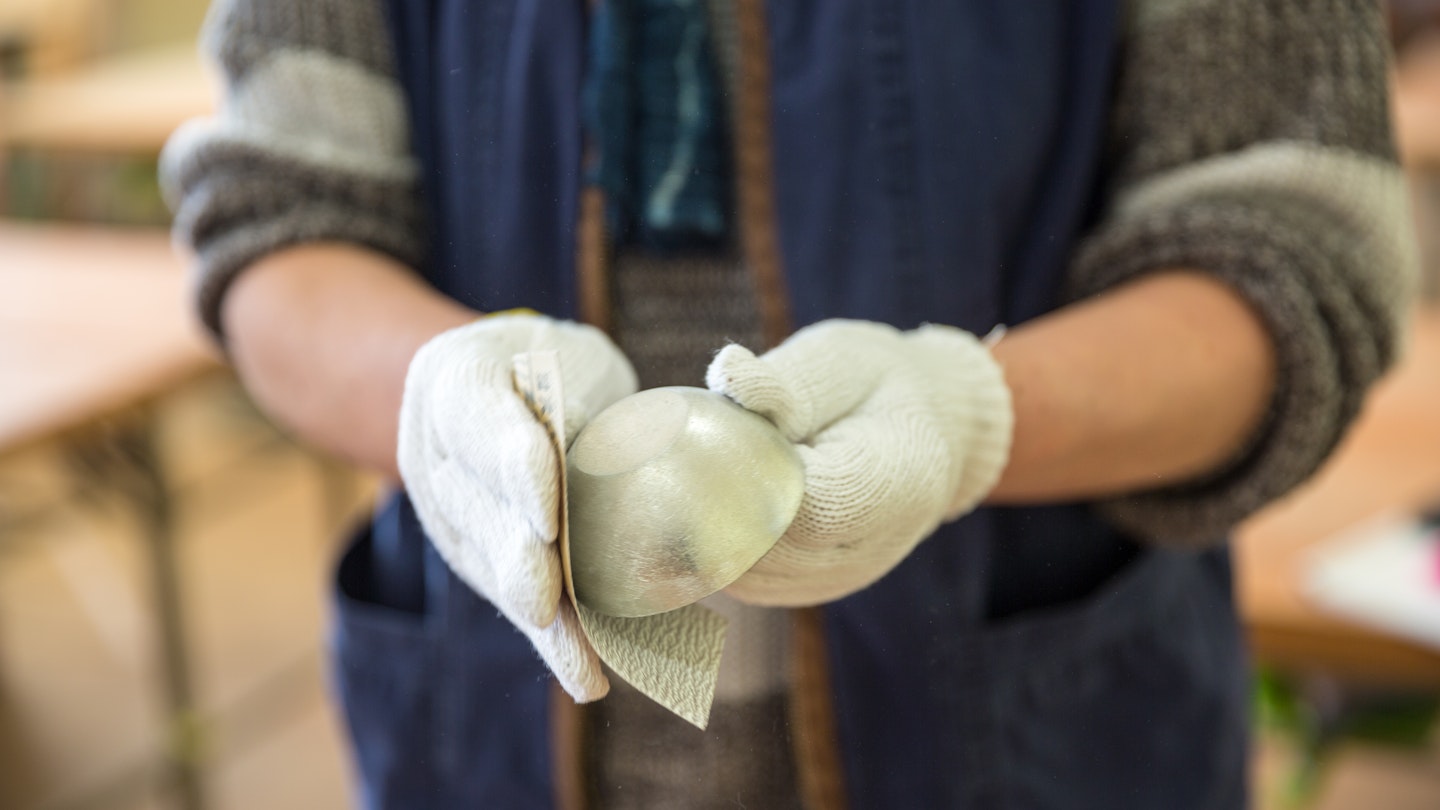The mountain-flanked region of Toyama in central Japan is replete with lush natural scenery flaunting both ocean and alpine vistas. This region is also home to a handful of exquisite traditional crafts dating back over 400 years. Conveniently positioned along the Hokuriku Shinkansen train line, Toyama serves as a popular stop for travelers headed to attractions such as the renowned Tateyama Kurobe Alpine Route. To gain a more in-depth understanding of the local history and culture, and pick up a rare souvenir or two, consider renting a car in Toyama and embarking on a craft tour of the region.
Washi paper, local lacquerware, and wood-carved sculptures are just a few examples of the delightful handmade goods you are likely to encounter on an arts circuit of Toyama. Many artisans have studios and workshops that welcome curious visitors hoping to catch a glimpse of skilled craftspeople at work. It’s still recommended to check online or call ahead to confirm opening hours before visiting.
Copperware in Takaoka
Takaoka City’s metal crafts date back more than 400 years when the daimyo (feudal lord) Maeda Toshinaga offered tax exemptions to seven master casters to establish businesses in what was then his castle town. Consequently, Takaoka became one of Japan’s leading metalware production centers, and this rich history of craftsmanship is proudly on display at the Takaoka Regional Market Center. Here, visitors can explore the crafts that make Toyama renowned, including the exquisite copper utensils.
At this market center, you can even get hands-on and make your own copper sake cup by pouring molten metal into a mold, allowing it to cool, and then sanding it down to a sleek, shiny finish. Once completed, feel free to bring it to a local izakaya (informal Japanese pub) for a complimentary cup of local sake. Takaoka is just a 35-minute drive from Toyama.
Basket-weaving in Himi City
While driving along the spectacular Toyama Bay coast and enjoying views of the Japan Sea, make a quick stop at the Himi City Museum, which features a permanent exhibition on Fujimi bamboo basket weaving. These traditional winnowing baskets were utilized for myriad purposes in Japan throughout history, including as a farm tool for sorting and carrying rice grains. However, modernization has diminished the demand for these baskets, placing the weaving technique at risk of extinction. The Himi City Museum is one of the few locations where visitors can catch a glimpse of this distinctive style of weaving.
Washi Handmade Paper in Gokayama
The village of Gokayama is renowned for its charming traditional thatched-roof gasshō-zukuri-style farmhouses surrounded by petite square rice plots. Here lies the Gokayama Washi Taiken-kan (papermaking center), where the local washi (handmade paper) tradition is preserved. Washi is crafted using fibers from the inner bark of the gampi tree, mitsumata shrub, or paper mulberry bush, resulting in paper that is both soft and robust. Visitors can engage in classes at the papermaking center, where you can create your own washi paper folding fans, postcards, and bookmarks under the guidance of skilled artisans.
Woodcarving in Inami
Inami boasts a woodcarving tradition that dates back over 250 years and is linked to a fire that destroyed the famous temple of Inami Betsuin Zuisenji in the mid-18th century. A master carpenter named Sanshiro Maekawa came to the region to train local workers to rebuild the temple, thus initiating the celebrated Inami wood-carving tradition. Local carpenters primarily use camphor tree, zelkova, and paulownia timber, employing up to 200 different types of chisels for intricate designs.
The Inami Wood Carving Composite Hall houses a collection of over 200 expertly crafted woodcarvings, with some pieces available for purchase. Visitors can marvel at beautifully carved ranma (wooden panels), shishi-gashira (lion dance masks), and many other exquisite carvings. Additionally, you can participate in workshops to create your own wooden items like smartphone speakers or accessory cases using traditional Japanese carving tools.
Takaoka ‘Shikki’ Lacquerware
During the Meiji Period (1868–1912), Takaoka emerged as one of Japan’s foremost lacquerware-producing regions and continues to hold a significant market share for items featuring inlaid mother of pearl. Takaoka lacquerware is celebrated for its diverse styles, including the aogai-nuri, yusuke-nuri, and chokoku-nuri techniques.
Aogai-nuri involves using thinly-shaved shells to create intricate patterns that resemble flowers and trees. Yusuke-nuri incorporates Chinese-inspired designs adorned with rust lacquer and garnished with various decorative elements, while chokoku-nuri features deep carving techniques that add a three-dimensional sculptural quality. Visitors can find all these styles at the Takaoka Regional Market Center. Tours of the nearby Albeky Company lacquerware factory are available with advance booking.
Many workshops offer hands-on experiences in making products with materials such as gold leaf or mother of pearl at the Shikki Kunimoto studio in Takaoka.





